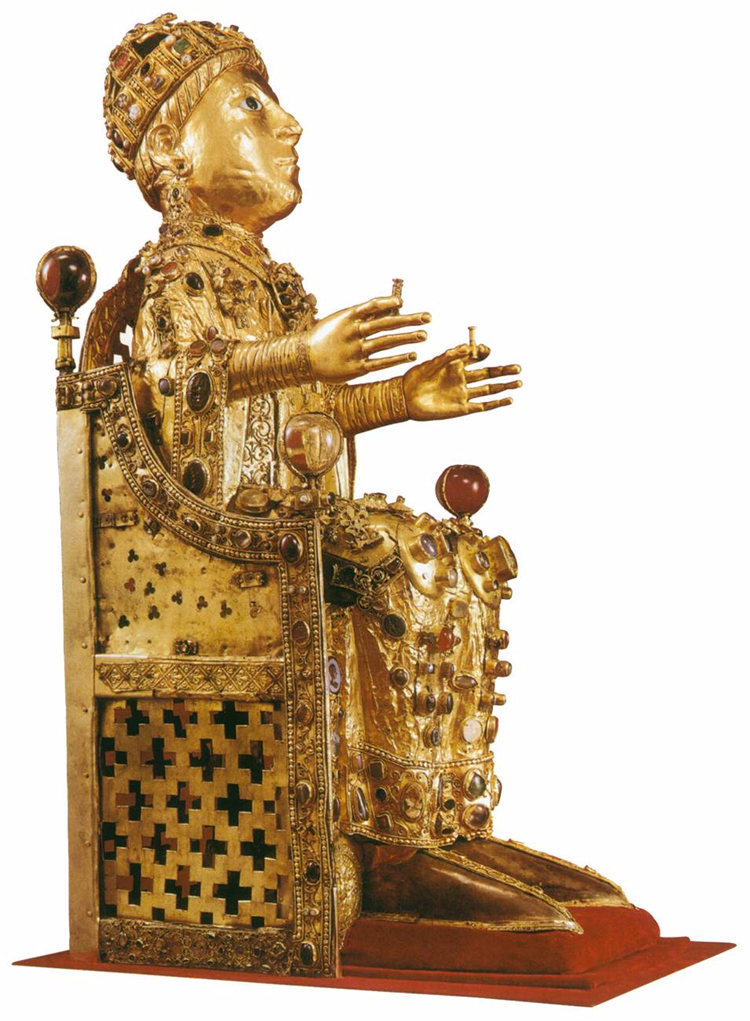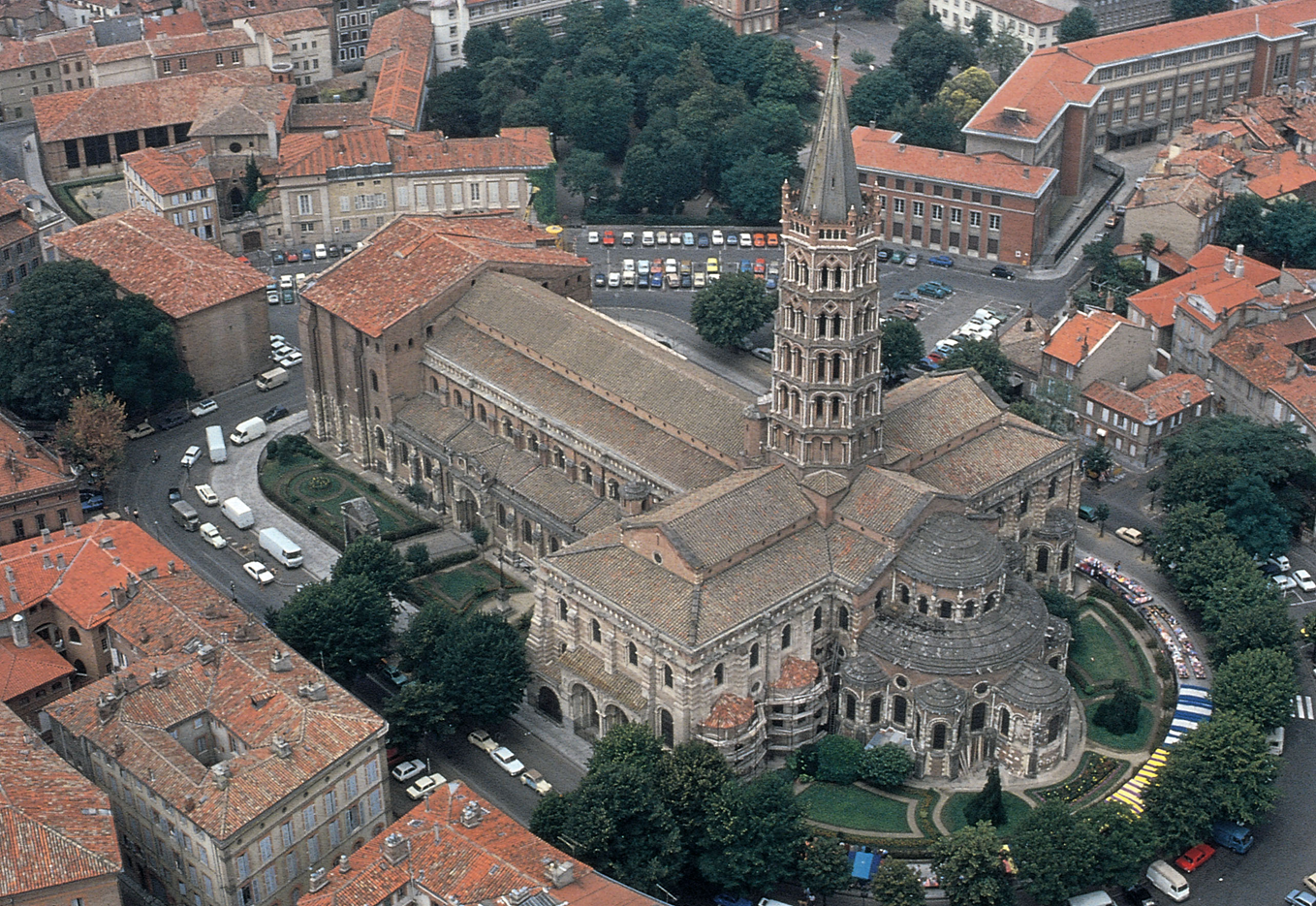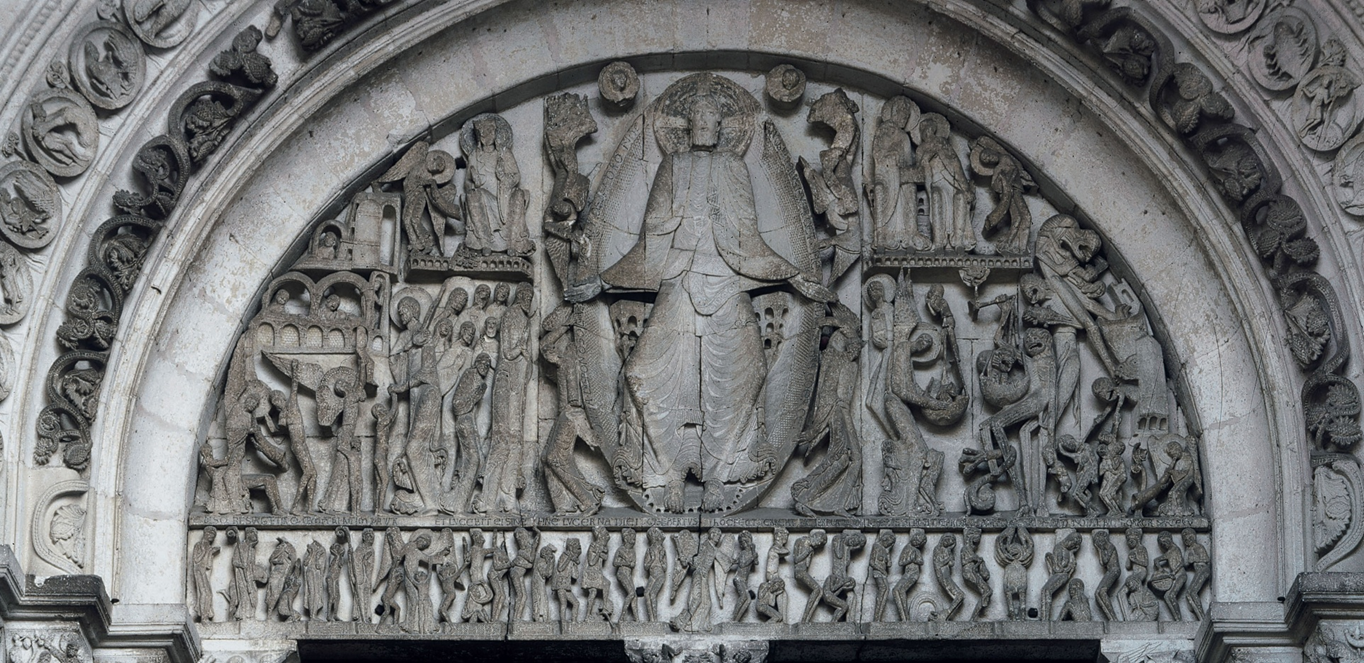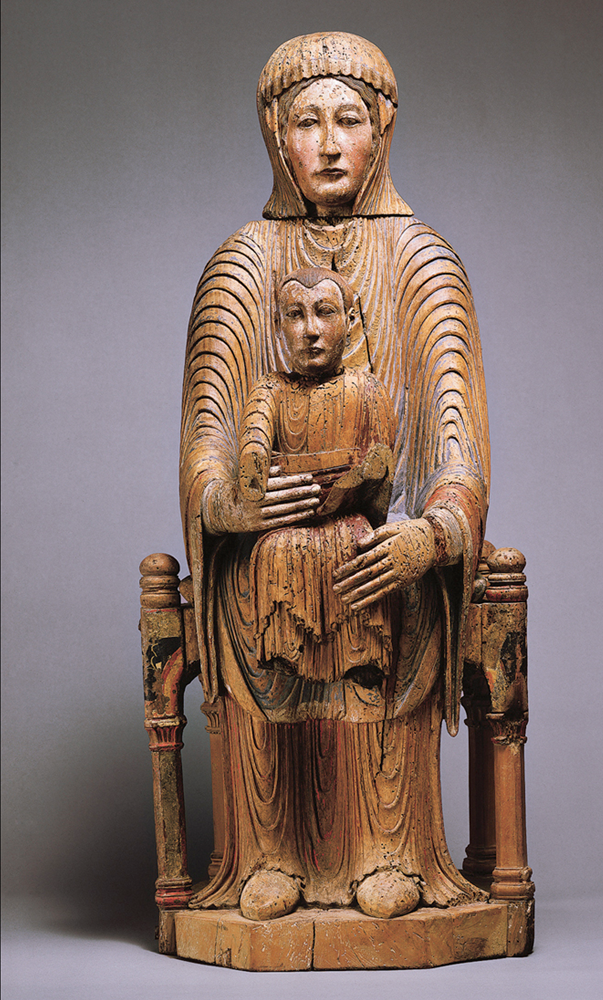Romanesque: 11th to 12th century (ca. 1100)
1/4
There's no tags or description
Looks like no tags are added yet.
Name | Mastery | Learn | Test | Matching | Spaced |
|---|
No study sessions yet.
5 Terms

Reliquary Statue of Sainte Foy (Saint Faith) Sainte-Foy, Conques, late 10th-early 11th cen.; 12-2
-Inside of the bullet proof glass is supposed to be a child martyr
-She lived centuries ago, died as a child, believed they had the actual skull
-There was also a whole business in relics
-Justified it with saying god wanted them to have it
-Relics were sacred, and pilgrims were coming
-The metal is guilt silver, there are gems and jewles on it and fashioned into a figure which is seated on a throne
-The head goes back to the early roman period and stuck it onto the body
-Has a crown, seated, its a she
-If she sits on a throne, she is regal, doesnt mean she is a queen, indicates her importance
-Kind of mangled together of different metal pieces
-The believed skull is supposed to be inside

Church of Saint-Sernin, Toulouse, France, ca. 1070-1120; 12-5, 12-6, 12-6a & b, 12-7
-pilgramage church
-No other building would be as big as it, because the church is the biggest
-It was in a town that was expanding into a city
-St sternernimius was the first bishop of toulouse
-Honors him and the church is in his name
-Toulouse was controlled by veterans, types of nobleman who hepled finance for crusades
-Church was made entirely of cut-stone
-Parts are distinct
-Second level of windows is called the gallery, situated above the inner aisle, which also serves to support the roof
-Great big stone building with a gallery
-Allowed for the movement of pilgrims because of wanting to control the mediterranian sea
-From the apse, things are extending
-Wanted it to be completely fireproof, have good acoustics, and be super durable (entirely cut-stone)
-To make the enormous vault, they need good buttressing on the sides of the interior
-There was a gallery as well, which also provided support
-There are no windows that are flush with the nave, no direct sunlight coming into the nave
-inside the nave, there is a big barrel vault
-Thin pilasters reaching from the top of one to another is a rib, thin half-circles, give clear definition
-Acoustics were really good because of the stone and the good resonance throughout the room
-Apse is the most sacred area and had relief carvings

Gelduinus, Christ in Majesty, relief in the ambulatory of Saint-Sernin, ca. 1096; 12-9
-Artists are considered craftsman during this time and not considered for their works
-relief carving in marble
-Shows christ as the lord, majesty celebrates him as the lord in heaven
-Figure is set within a mandorla, large orb/frame of light and also has the halo, within it is the holy and divine being
-Seated on a throne, bc he is referred to has king of heaven
-Seated on the church of saint serin, because of all the arches, and churches are referred to as house of the lord
-He holds a book, his word, abbreviation for "peace to you"
-He's also having his other hand up, blessing people
-Use it for their christian symbolism
-Benevolent image, kind, He has holy people attire
-Four figures with wings are surrounding him, four angels, matthew, mark, luke, and john
-Artist is thinking of the concept of realism, but still not realist
-Theres balance, repition of patters, alternating curves, mideval aesthetic
-New bc its sculpture on the inside

Gislebertus, The Last Judgment, Tympanum, St. Lazare, Autun, France, ca. 1120-1145; 12-1 and 12-4
-Main door is called a portal
-Goal was to make it more beautiful and grand
-She will look at the relief carvings that embellish the main entrance of the church
-Acient works are figures, all to do with christian faith
-Cannot enter the church without looking at the images
-Big half circle is called the tympanum, beneath it is the lintel
-The tympanum includes the lintel
-Jambs (french for legs) on each side
-Half circles on the top are archsoemthing
-Pilgrims see an image of the last judgement
-Instruct the pilgrims about christian belief
-Christ is an omnipotent (all-powerful) judge
-Largest figure is christ seated on a throne, church is the lords house
-Set within a door something, long robes, halo, hands are extended to either side, indicating who goes up to heaven or down to hell
-Little people on the bottom of it are souls possibly rising from their coffin, and some who are above who are rising to heaven
-Arches near the top, and mary is one of the people on top going to heaven, and more saints,
-On the sides there are demons, who are grabbing souls and taking them down
-There are also angels, four large ones, surrounding the mandorla
-Most of the souls on the bottom do not have clothes, supposed to represent souls, naked figures and are rising up from the coffins
-Some of them are afraid, few of them actually do have clothes or objects to identify them, clerics, etc
-Theres two round circles in the left side, which represent the kingdom of heaven
-Mary on a throne, she has a crown, queen of heaven, halo means holy

Virgin and Child, from Auvergne, France, 2nd ½ 12th century; 12-20
-Wooden sculpture that originally wouldve had an additional metal crown and halo with Christ Child having a cross-inscribed halo
-Mary is seated on the throne of wisdom, and is symbolic because shes a mortal female, was able to commune with god the father above by way of the holy spirit, which his essence entered her, and all of that created the mortal form of God, the son
-Seat of wisdom, which is wisdom from above, divine knowledge, and since Christ Child is sitting on Marys lap, which shes sitting on the throne, that means Christ Child is also on the throne of Wisdom, but he has the word of god, and his hands would have originally held a book
-The work is a symbolic rendering